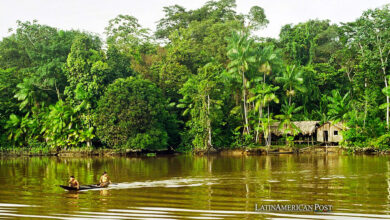Latin America: The Region Where Wildlife is Lost the Most
The Findings of the Living Planet 2022 Report Show a Worrying Scenario for the Latin American Region in Terms of Biodiversity Loss.

Photo: Pixabay
LatinAmerican Post | María Claudia Ramírez
Listen to this article
Leer en español: Latinoamérica: la región en la que más se pierde vida salvaje
Latin America cracked again in the recent Living Planet 2022 report from the World Wide Fund for Nature (WWF) that refers to the state of health of biodiversity on the planet between 1970 and 2018. It is becoming more and more evident the percentage of loss of biodiversity, with natural spaces and wildlife in the region, unleashing a collapse in ecosystems and, indisputably, in humanity and in all life on Earth.
In this edition, the most exhaustive in recent years, nearly 32,000 specimens of 5,230 species from around the world were evaluated, that is, 11,000 more than in 2020. Experts showed that Latin America had the greatest decline in population abundance, with a decrease of 94%, followed by Africa (66%), Asia (55%) and Europe (18%). These worrying figures are a warning of the deterioration of our planet, said Marco Lambertini, director general of WWF International.
In Latin America, the Amazon continues to be the most affected territory, given that deforestation rates continue to increase: “We have already lost 17% of the original extension of the forests, and another 17% is degraded. The latest research indicates that we are rapidly approaching the point of no return…” But it does not end there, despite the fact that South America and the Caribbean are two robust regions in the world in terms of biodiversity, species of mammals, birds, amphibians, reptiles and fish are also in danger, as well as the supply of fresh water: “Freshwater is equally essential to our survival and well-being for its domestic use, energy production, food security and industry. Despite the fact that it only represents 1% of the planet's surface, more than 50% of the human population lives less than three kilometers from a course or body of fresh water…”, says the report.
We recommend you read: Gallery: 10 unique Colombian birds in the world
The difficulties that the planet is going through due to human action, the climate crisis and the loss of biodiversity, are presented in the report as two sides of the same coin, since they are interconnected. Land use change continues to be the main factor in this problem. However, it is pointed out that, if we do not limit warming to 1.5°C, climate change will most likely become the main cause of biodiversity loss in the coming decades.
To face this threat, experts have carried out research in this region of the planet to demonstrate the impact of the overexploitation of natural resources, the destruction and fragmentation of habitats on land, water and air, as well as the results of introducing species to places outside their original territories causing them to become invasive species.
Another of the most comprehensive studies was the report by the Intergovernmental Panel on Climate Change (IPCC) published last April. In it, it is clearly stated that one crisis cannot be addressed without the other. In other words, they reinforce the theory that, by caring for biodiversity, we aim for a more sustainable and fair future that will guarantee the well-being and economy of humanity, among other things, for our climate, food and water security.
Although to achieve this, "it is necessary to carry out changes that encompass the entire system: how we produce and consume, the technology we use and our economic and financial systems," says Juan Felipe Blanco Libreros, a researcher at the University of Antioquia, Colombia , and one of the authors of the WWF report.
The negative impact of human activity on biodiversity has advanced to such an extent that it is no longer waiting. Strong actions are required by all the actors involved. This edition, written by 86 authors, highlights that "change is still possible" and insists on the urgent need for environmental authorities, leaders of indigenous peoples, and decision makers to start discussing and planning the strategy they will promote to counteract the loss of biodiversity in Latin America and the world. Likewise, they specify that the next UN Conference on Biological Diversity (COP15) to be held in December 2022 in Montreal, Canada, and which will convene governments from around the world to agree on a new global framework for biological diversity after 2020 is the stage to create policies that safeguard the future of the planet and people.



